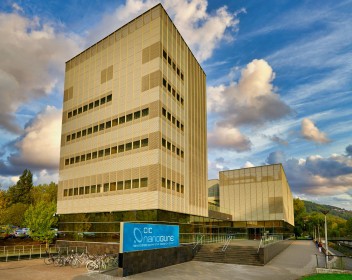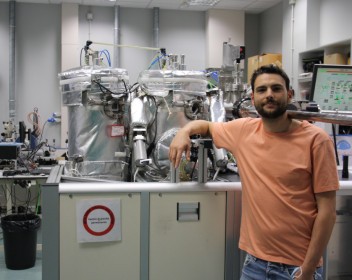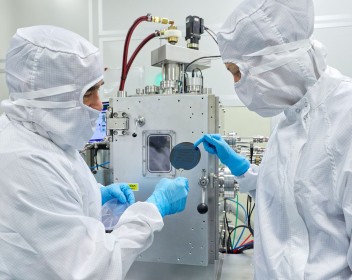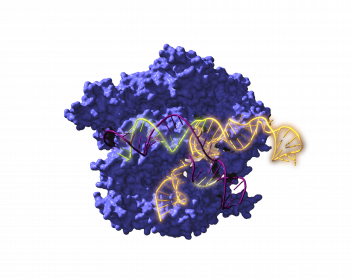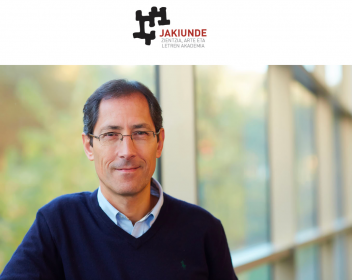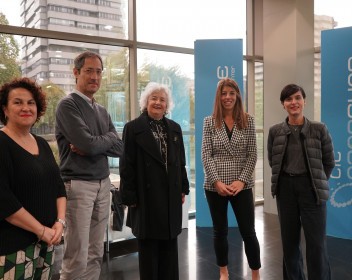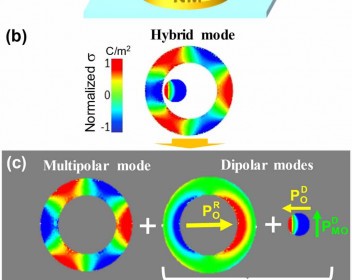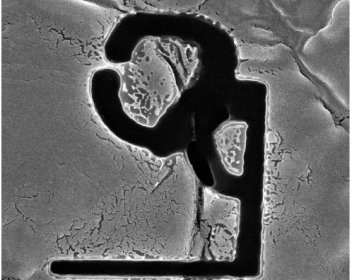Newsroom
News
Integra Therapeutics to exploit CIC nanoGUNE’s CRISPR-Cas technology
CIC nanoGUNE has concluded a licensing agreement with Integra Therapeutics, a leading biotech company in next-generation gene writing, which entails the transfer of the exclusive operating rights of a technology that is the intellectual property of nanoGUNE. This particular license will allow ancestral CRISPR-Cas technology, which according to early research is more versatile than the currently existing variants, to be exploited.
Francesco Calavalle, winner of the GEFES award for best experimental thesis
The researcher Francesco Calavalle has been awarded the prize for best experimental PhD thesis by the Condensed Matter Physics Division (GEFES) of the Spanish Royal Physics Society (RSEF). The thesis “Probing and tuning the properties of van der Waals materials“ was worked on at CIC nanoGUNE, under the supervision of Ikerbasque Professor Luis Hueso.
Emakumeak Zientzian, to benefit society as a whole
Twenty-four Basque organizations are joining forces around the Emakumeak Zientzian project, thus declaring their commitment to the objectives of the initiative: to make the activity of women in science visible, to break with the typically male roles attributed to scientific and technical work, and to encourage girls and adolescents to opt for scientific careers. With these objectives in mind, the organizations are coming together to run a joint program of activities to mark International Day of Women and Girls in Science, which is celebrated every year on February 11.
Registration period for the summer internship program open
2.6 billion-year-old ancestors of the CRISPR gene-editing tool are resurrected
An international research group has for the first time reconstructed ancestors dating back 2.6 billion years of the well-known CRISPR-Cas system, and studied their evolution over time. The results suggest that the revitalized systems not only work, but are more versatile than current versions and could have revolutionary applications. The prestigious scientific journal Nature Microbiology has published the results of this research which, in the opinion of the research team, "opens up new avenues for gene editing".
Women at the forefront of science and technology
Twenty-four Basque entities join forces around the Emakumeak Zientzian project by signing a new collaboration agreement, thus ratifying their commitment to the initiative’s objectives: make women’s activity in science visible, break with typically male roles attributed to scientific-technical activities and encourage the choice of scientific careers among girls and adolescents. With these objectives in mind, the entities join forces to organize a joint program of activities on the occasion of the International Day of Women and Girls in Science, which is celebrated every year on February 11.
Jose Maria Pitarke, elected full member of Jakiunde
NanoGUNE's Director, Jose Maria Pitarke, was elected member of Jakiunde, the Basque Academy of Sciences, Arts, and Letters, on 18 November 2022 at the autumn plenary session held by the Academy in Argomaniz.
CIC nanoGUNE and BIC Gipuzkoa strengthen ties to increase the social and economic impact of nanotechnology
At nanoGUNE this morning CIC nanoGUNE and BIC Gipuzkoa analyzed the outcomes of the collaboration between both organizations over the last four years. Jose Maria Pitarke, director of nanoGUNE, and Marisa Arriola, managing director of BIC Gipuzkoa, highlighted the success of the enhancement program to generate new innovation projects and new enterprises, and with respect to the four projects developed jointly, they predicted a significant economic and social impact of nanotechnologies applied to the biomedical sector.
Publication of the 2022 magneto-optics roadmap
Under the editorial leadership of nanoGUNE’s Nanomagnetism group leaders Paolo Vavassori and Andreas Berger, the Journal of Physics D – Applied Physics has now published its 2022 magneto-optics Roadmap. An upcoming Webinar focused on the Roadmap will also explore the latest developments in magneto-optics science and technology next 13 October.
Oksana Yurkevich, best oral presentation award at NANO2022
Agenda
| Mon | Tue | Wed | Thu | Fri | Sat | Sun |
|---|---|---|---|---|---|---|
|
1
|
2
|
3
|
4
|
5
|
6
|
7
|
|
|
|
|
|
|
|
|
|
8
|
11
|
13
|
14
|
|||
|
|
|
|
|
|||
|
15
|
17
|
18
|
19
|
20
|
21
|
|
|
|
|
|
|
|
|
|
|
22
|
23
|
24
|
25
|
26
|
27
|
28
|
|
|
|
|
|
|
|
|
|
29
|
30
|
31
|
1
|
2
|
3
|
4
|
|
|
|
|
|
|
|
|
Events
- 04/02/2026 to 06/02/2026
nanoGUNE Winter School 2026
nanoVISUALS
Find events' photos, experimental images, videos, audios, and nanoGUNE's corporate images.

